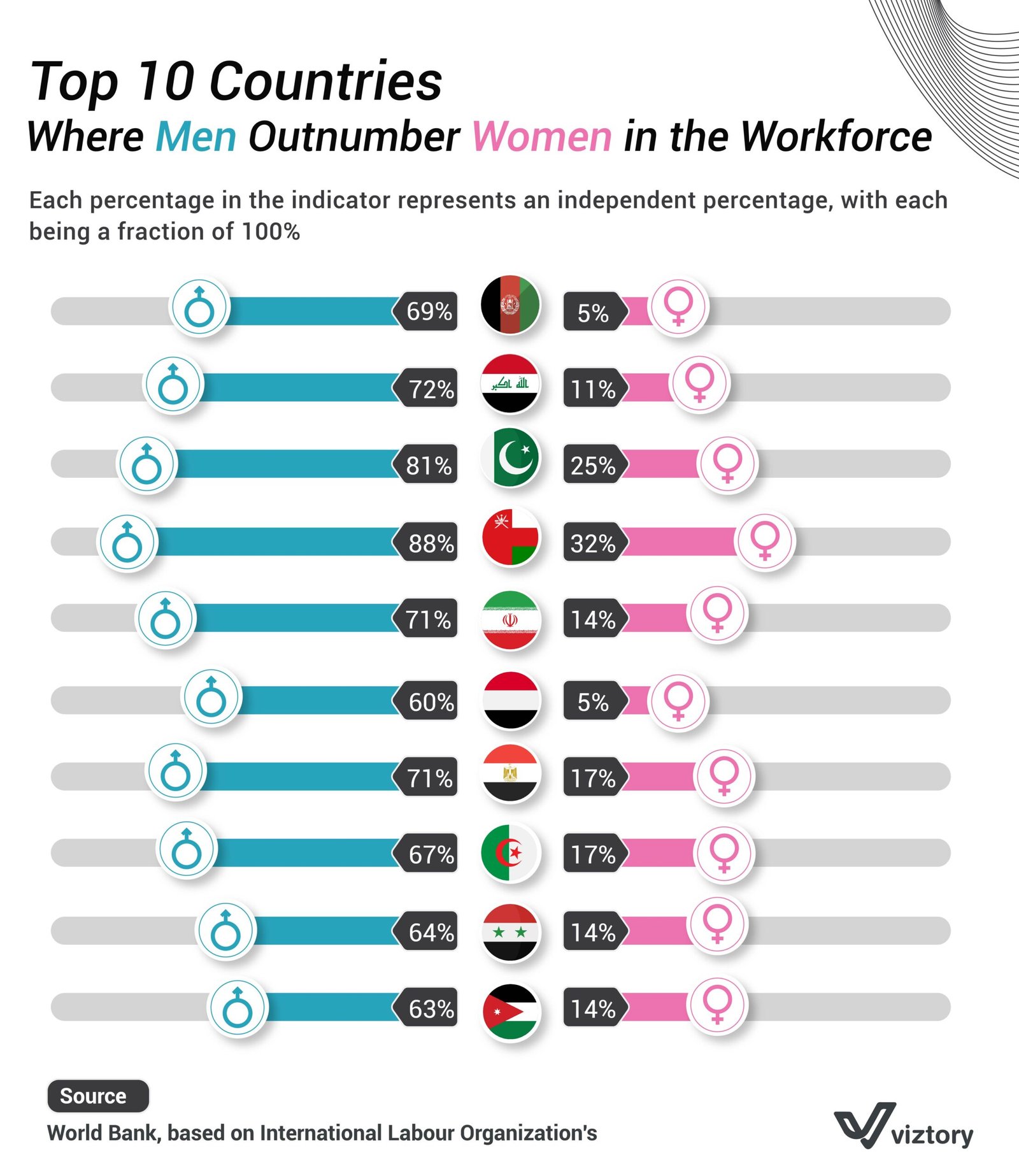Workforce Gender Gap in the Middle East and North Africa
-
Aug, Mon, 2024
Workforce Gender Gap in the Middle East and North Africa
The attached image represents a group of countries that top the list where men dominate the labor market compared to women. These countries include Afghanistan, Yemen, Pakistan, Oman, Iran, Egypt, Algeria, Syria, and Jordan, with varying percentages representing the participation of each gender in the workforce.
Middle East and North Africa: A Wide Gender Gap in the Labor Market
The Middle East and North Africa (MENA) region is one of the areas witnessing a significant gender gap in the labor market. The attached image highlights ten countries in this region where the number of men in the workforce significantly outnumbers women.
Analysis of the Percentages
Afghanistan: Afghanistan ranks first with 69% of men compared to only 5% of women in the workforce. This reflects the difficult reality for women in the country, where social and religious restrictions impose significant barriers to their entry into the labor market.
Yemen: Yemen is second on the list with 72% of men versus 11% of women. Yemen faces significant economic and political challenges, making it difficult for women to participate in the workforce.
Pakistan: The percentage of working men reaches 81% compared to 25% for women. Despite some improvements in social indicators, the conservative culture still significantly affects women’s participation in the labor market.
Oman: Despite economic development in Oman, the gap remains clear with 88% of men compared to 32% of women.
Iran: Iran registers 71% of men compared to 14% of women. Economic sanctions and domestic policies impose additional restrictions on women’s participation in the workforce.
Egypt: Egypt records 71% of men versus 17% of women. Despite efforts to improve women’s participation in the labor market, cultural and social challenges persist.
Algeria: Algeria registers 67% of men versus 17% of women, reflecting similar social challenges found in other countries in the region.
Syria: The situation in Syria is more complicated due to the ongoing civil war, with women representing 14% compared to 64% of men in the workforce.
Jordan: Despite efforts to empower women, the percentage of women in the workforce remains low, with 14% compared to 63% of men.
Factors Affecting Women’s Participation
These figures reflect a variety of factors influencing women’s participation in the labor market in the Middle East and North Africa region, including:
- Cultural Factors: Societies in these countries continue to uphold traditions that limit women’s participation in many fields.
- Government Policies: Government policies vary from one country to another but are often not sufficiently encouraging for women’s participation in the workforce.
- Education and Economic Opportunities: Limited educational and training opportunities, along with restricted economic prospects, are among the biggest challenges for women in the region.
Conclusion
The attached image points to significant challenges faced by women in entering the labor market in the Middle East and North Africa. Improving these figures requires ongoing efforts from governments and civil society to change prevailing mindsets and cultures, enhance women’s empowerment policies, and provide better educational and economic opportunities for women.

